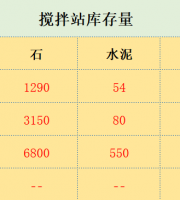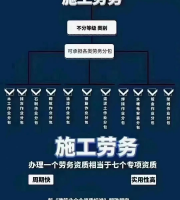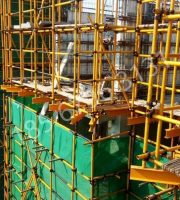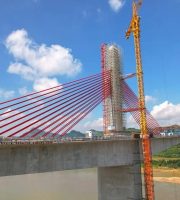The direct cost for engineering projects is divided into two parts: one is directly used for the consumption of Engineering entities, including material consumption, small and medium-sized machinery consumption and labor consumption; Second, it is indirectly used for the consumption of Engineering entities, including the consumption of large machinery and other consumption.
In the project, we must pay attention to the causes of cost formation and its impact, especially in the distributed management mode.
The third calculation of planned cost is the cost formed according to the summary of various plans guiding the construction.
Therefore, the management and control of this part has become the focus of the daily work of the project department.

2) pay attention to loss expense items, focus on large cost items, and investigate the reasons for profit and loss one by one.
Comparison content: we have analyzed four levels of data in construction project management, namely: bid winning budget data, construction budget data, planned cost data and actual consumption data.
In the preparation process, it should be emphasized not to break through the construction budget.
The contract budget shall strictly control the preparation of the contract budget, and the planned cost shall be prepared with reference to the contract budget.
Major cost items to be focused on include: profit and loss of subcontracting expenses, profit and loss of reinforcement expenses, profit and loss of commercial concrete expenses, profit and loss of revolving material expenses, profit and loss of machinery use expenses, profit and loss of temporary equipment expenses, etc..
In addition, according to the actual situation, the construction budget plays different roles in different situations.
Otherwise, the project will definitely lose money.
The actual cost shall be recorded in time after it occurs to ensure the comprehensiveness, integrity and authenticity of the cost data.
Therefore, mastering appropriate analysis methods is very important for cost management.
However, because construction enterprises are generally two-level management, the cost composition is more complex.
It should follow the principle of comparative analysis and the analysis method from macro to micro, from comprehensive to key, from coarse to fine, from outside to inside.
In the process of actual cost, it is necessary to compare it with the planned cost from time to time, and use the planned cost to assess the actual cost.
For the cost analysis of construction projects, not only the time benchmark but also the construction location should be considered to make the cost data comparable.
Therefore, the planned cost prepared with reference to the contract budget and construction scheme plays a role in guiding the construction; 4) solve the problem of rapid estimation of planned cost during contracting; 5) solve the problem of budget income of “trilateral project” during construction.
It can be basically divided into: company management expenses, expenses directly used by the company for a project, management expenses of the project itself, and direct expenses used for engineering projects.
For a project department, the controllable cost is the management cost of the project itself and the direct cost used for the project, and other issues are considered by the company’s managers.
Cost analysis of construction project cost analysis of construction project should follow the principle of comparative analysis.
The planned cost shall strictly control the occurrence of the actual cost; 3) specify the planned cost as the basis for guiding the construction.
When solving the problem of rapid estimation of contract plan cost, the second is the concept of contract budget, which plays the role of replacing construction plan; When solving the budget income problem of “trilateral project”, the second concept is the construction budget, which plays a role in replacing the bid winning budget.
For this controllable part of the cost, the direct cost for the project accounts for the largest proportion and is also the most difficult to control.
For construction enterprises, the main business is construction, and the income is relatively single, that is, the contract budget income.
If the company has enterprise quota, it will be prepared according to the enterprise quota, which will be used as the control quota of the project department.
The first calculation of the contract budget, also known as the bid winning estimate, is the income basis of the project.
The analysis conclusion is obtained by data comparison.
Comparative analysis should master two basic constraints: one is the comparison benchmark and the other is the comparison content.
The fourth calculation has determined the focus of the analysis, so where to start? It is considered that we should start with the comparison of four calculations, namely contract budget, construction budget, planned cost and actual cost.
Comparison benchmark: Generally speaking, the time (monthly) is the standard in finance.
Only by mastering appropriate analysis methods can we find the problems of cost management in time, find out the causes and solve the problems.
Since the contract budget and contract budget are prepared according to the overall project, the total amount can be controlled, which is difficult to control in the construction process.
The dynamic cause of cost analysis comes from the motion of “cost cause analysis”.
If the actual situation cannot be achieved, it should be strictly controlled within the bid winning budget.
Fourth, calculate the actual cost and the collection of actual consumption, which represents the actual consumption level.
Therefore, data comparison is the basic principle of analysis.
During analysis, different analysis reports should be defined according to different analysis requirements to illustrate different problems.
The role of four calculations # mastering the “four calculations” can play the following roles: 1) indicating the control objectives at all levels and clarifying the profits at all levels; 2) distinguish the functions of each calculation.
It is the estimation and control index of the actual construction cost in advance and in the process.
During the construction process, the project department must control the occurrence of various expenses within the budget.
When analyzing, we should follow the analysis method from coarse to fine and from table to inside: 1) summarize the cost analysis table and look at the difference between the budget revenue and actual cost of the whole project from the perspective of cost composition.
Different comparisons between these data illustrate different problems.
The cost analysis method of construction project is basically the same as that of general problem analysis.
Second, the construction budget, also known as the contract budget, is prepared by the company according to the construction quota.




